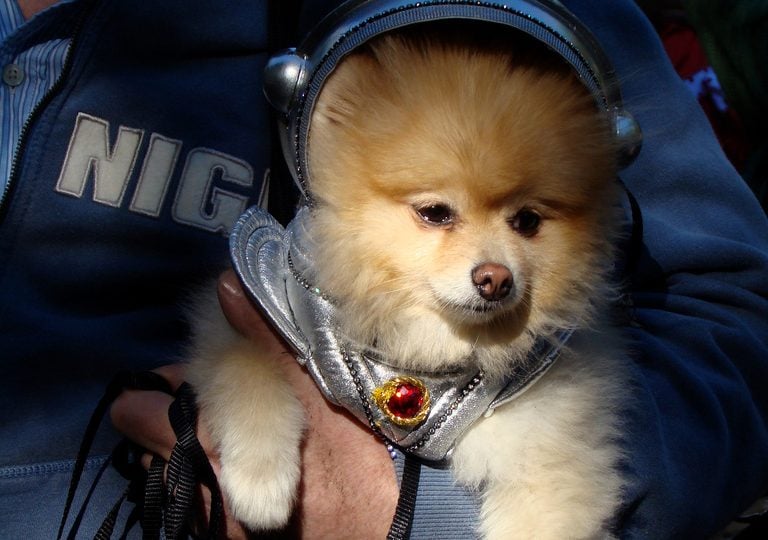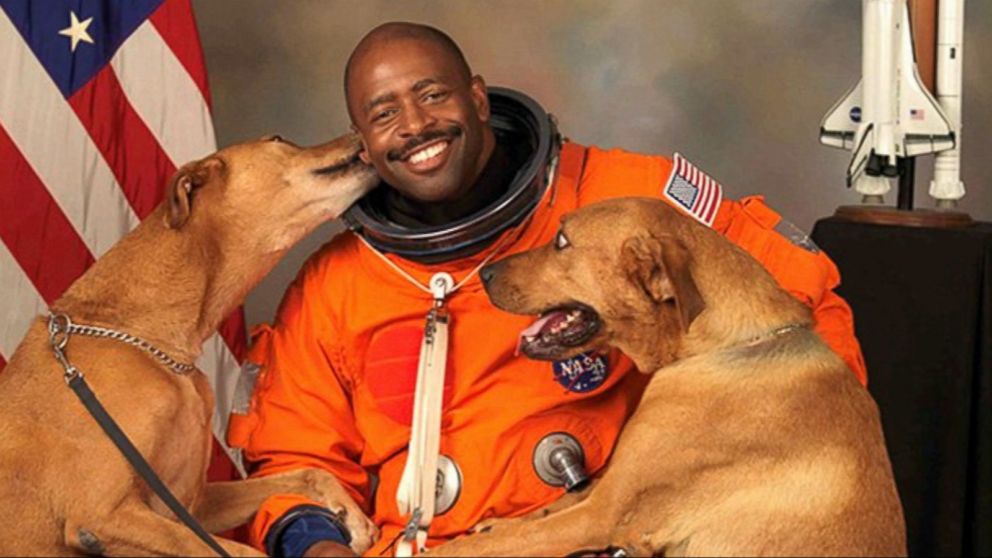When you think about space exploration, the first thing that comes to mind is probably astronauts in sleek suits, floating around in orbit. But did you know that dogs were some of the earliest space travelers? Astronaut dogs played a crucial role in the early days of space exploration, paving the way for human missions. Their bravery and sacrifice helped scientists understand the effects of space travel on living beings. So, buckle up, because we're about to dive deep into the fascinating world of these four-legged space heroes.
Astronaut dogs might sound like something out of a sci-fi movie, but they're very much a part of history. These incredible animals were chosen for their intelligence, adaptability, and calm demeanor under pressure. They underwent rigorous training and testing, proving that life could survive the harsh conditions of space. Without them, our understanding of space travel would not be where it is today.
Now, let's take a closer look at the incredible journey of these space pups. From their origins to their legacy, this story is filled with heartwarming moments, groundbreaking discoveries, and a whole lot of tail-wagging pride. So, let's get started and uncover the amazing world of astronaut dogs.
Read also:Game Of Thrones Targaryen Family Tree A Comprehensive Guide To The Bloodline Of Fire And Blood
Table of Contents
- The History of Astronaut Dogs
- Training the Pups for Space
- Famous Astronaut Dogs
- Biography of Laika, the First Dog in Space
- The Science Behind Dog Space Missions
- Challenges Faced by Astronaut Dogs
- The Legacy of Astronaut Dogs
- Modern Space Exploration and Dogs
- Ethical Questions Around Astronaut Dogs
- Conclusion: Why We Should Remember Astronaut Dogs
The History of Astronaut Dogs
Space exploration didn't start with humans. It started with dogs. Back in the 1950s and 60s, during the height of the space race between the United States and the Soviet Union, scientists were eager to figure out if space travel was safe for living creatures. Enter the astronaut dogs. The Soviet Union, in particular, took a keen interest in using dogs as test subjects. They believed that dogs were the perfect candidates due to their size, temperament, and ability to stay calm in stressful situations.
The first successful launch involving a dog happened on November 3, 1957, when Laika, a stray dog from the streets of Moscow, became the first living creature to orbit the Earth. While Laika tragically didn't survive the mission, her journey paved the way for future space exploration. The data collected from her mission was invaluable in understanding the effects of space travel on living organisms.
Why Dogs Were Chosen Over Other Animals
Scientists had several reasons for choosing dogs over other animals. First, dogs were more adaptable than primates or cats. Second, their size made them easier to fit into the cramped quarters of early spacecraft. Lastly, their ability to bond with humans made them easier to train and work with. These factors combined to make dogs the ideal candidates for space missions.
Training the Pups for Space
Training astronaut dogs was no easy task. The process involved rigorous physical and psychological conditioning. Dogs had to learn how to endure the extreme forces of launch and re-entry, as well as the weightlessness of space. They were subjected to centrifuge tests, pressure chambers, and other simulations to prepare them for the challenges of space travel.
One of the most important aspects of training was teaching the dogs to remain calm in confined spaces. They were placed in small capsules for extended periods to simulate the conditions of a spacecraft. This helped them get used to the limited space they would experience during their missions.
Key Training Techniques
- Centrifuge training to simulate the forces of launch
- Pressure chamber tests to mimic the vacuum of space
- Confined space exercises to prepare for the spacecraft environment
- Behavioral conditioning to ensure calmness under stress
Famous Astronaut Dogs
While Laika is the most famous of the astronaut dogs, there were many others who made significant contributions to space exploration. Some of these dogs include Belka and Strelka, who were the first dogs to survive a space mission, and Zvezdochka, who flew a successful test flight before humans attempted orbit.
Read also:Anne Heche Accident The Untold Story And What You Need To Know
Belka and Strelka's mission in 1960 was a major milestone. Not only did they survive their journey, but they also returned to Earth safely, proving that space travel was possible for living beings. Their success gave scientists the confidence to move forward with human space missions.
Meet Belka and Strelka
Belka and Strelka were two of the most beloved astronaut dogs. Their mission captured the hearts of people around the world. After their successful return, they became media sensations, appearing on TV shows and in parades. Their story is a testament to the courage and resilience of these incredible animals.
Biography of Laika, the First Dog in Space
Laika's story is one of both triumph and tragedy. A stray dog from the streets of Moscow, she was selected for the Soviet space program due to her intelligence and calm demeanor. Her mission aboard the Sputnik 2 spacecraft was groundbreaking, but it was also controversial. Laika was not expected to survive the mission, as the spacecraft was not designed for a safe return.
Despite the controversy, Laika's journey provided invaluable data about the effects of space travel on living organisms. Her sacrifice paved the way for future space exploration and highlighted the importance of ethical considerations in scientific research.
| Name | Laika |
|---|---|
| Breed | Mixed breed (part Husky, part Terrier) |
| Date of Birth | Unknown (estimated around 1954) |
| Date of Space Mission | November 3, 1957 |
| Outcome | Did not survive the mission |
The Science Behind Dog Space Missions
The science behind dog space missions was groundbreaking. Scientists were able to study the effects of space travel on living organisms, including changes in heart rate, blood pressure, and muscle function. These studies helped them understand the challenges of long-term space travel and develop solutions to overcome them.
One of the key discoveries was the impact of weightlessness on the body. Dogs experienced changes in their muscle tone and bone density, which provided valuable insights into how humans might adapt to similar conditions. This research was crucial in preparing for future manned missions to the Moon and beyond.
Key Scientific Findings
- Changes in muscle tone and bone density due to weightlessness
- Effects of radiation exposure on living organisms
- Impact of extreme forces during launch and re-entry
Challenges Faced by Astronaut Dogs
Being an astronaut dog was not without its challenges. The dogs faced extreme physical and psychological stress during their missions. They had to endure the intense forces of launch and re-entry, as well as the disorienting experience of weightlessness. Additionally, they had to cope with the confined space and limited resources of the spacecraft.
Despite these challenges, the dogs performed admirably. Their bravery and resilience helped scientists gather crucial data that would shape the future of space exploration.
How Scientists Overcame These Challenges
Scientists worked tirelessly to overcome the challenges faced by astronaut dogs. They developed advanced training techniques and improved spacecraft designs to ensure the safety and comfort of the animals. These efforts paid off, as subsequent missions proved to be more successful and less stressful for the dogs.
The Legacy of Astronaut Dogs
The legacy of astronaut dogs is a lasting one. Their contributions to space exploration have been celebrated in films, books, and even monuments. Laika, in particular, has been immortalized in statues and memorials around the world. Her story serves as a reminder of the sacrifices made in the pursuit of scientific discovery.
Today, astronaut dogs are remembered not just for their scientific contributions but also for their courage and determination. They paved the way for future space exploration and inspired generations of scientists and engineers.
Modern Space Exploration and Dogs
While dogs are no longer used in space missions, their legacy continues to influence modern space exploration. The data collected from their missions has been instrumental in developing advanced spacecraft and life-support systems. Scientists continue to study the effects of space travel on living organisms, using the knowledge gained from astronaut dogs to improve the safety and efficiency of future missions.
In recent years, there has been a renewed interest in sending animals to space, particularly for long-duration missions. While dogs are unlikely to return to the forefront of space exploration, their contributions will always be remembered and appreciated.
Ethical Questions Around Astronaut Dogs
The use of animals in space exploration raises important ethical questions. While the data collected from these missions was invaluable, the treatment of the animals involved is a topic of ongoing debate. Some argue that the sacrifices made by astronaut dogs were necessary for the advancement of science, while others believe that more could have been done to ensure their safety and well-being.
Today, ethical considerations are a top priority in scientific research. Scientists are committed to minimizing the impact on animals and ensuring that their welfare is protected. The legacy of astronaut dogs serves as a reminder of the importance of balancing scientific progress with ethical responsibility.
Conclusion: Why We Should Remember Astronaut Dogs
Astronaut dogs played a crucial role in the early days of space exploration. Their bravery and sacrifice helped scientists understand the effects of space travel on living organisms, paving the way for future missions. While their journey was not without challenges, their contributions to science and humanity are undeniable.
As we continue to explore the mysteries of space, let's remember the incredible dogs who paved the way. Their legacy is a testament to the power of courage, resilience, and scientific curiosity. So, the next time you look up at the stars, take a moment to think about the brave pups who helped us get there.
Got any thoughts or questions about astronaut dogs? Drop a comment below and let's chat! And if you enjoyed this article, don't forget to share it with your friends and family. There's so much more to discover about the fascinating world of space exploration.


